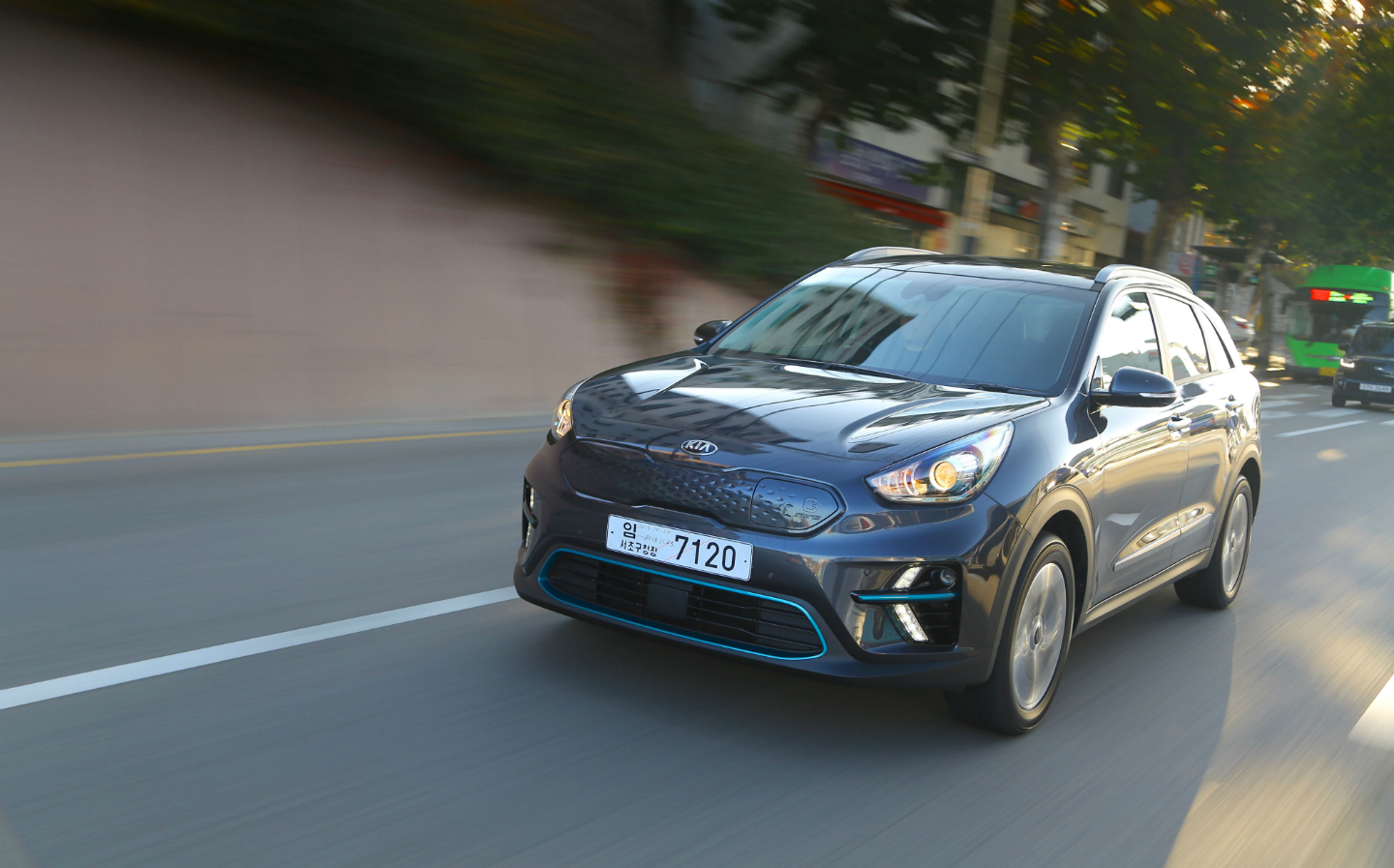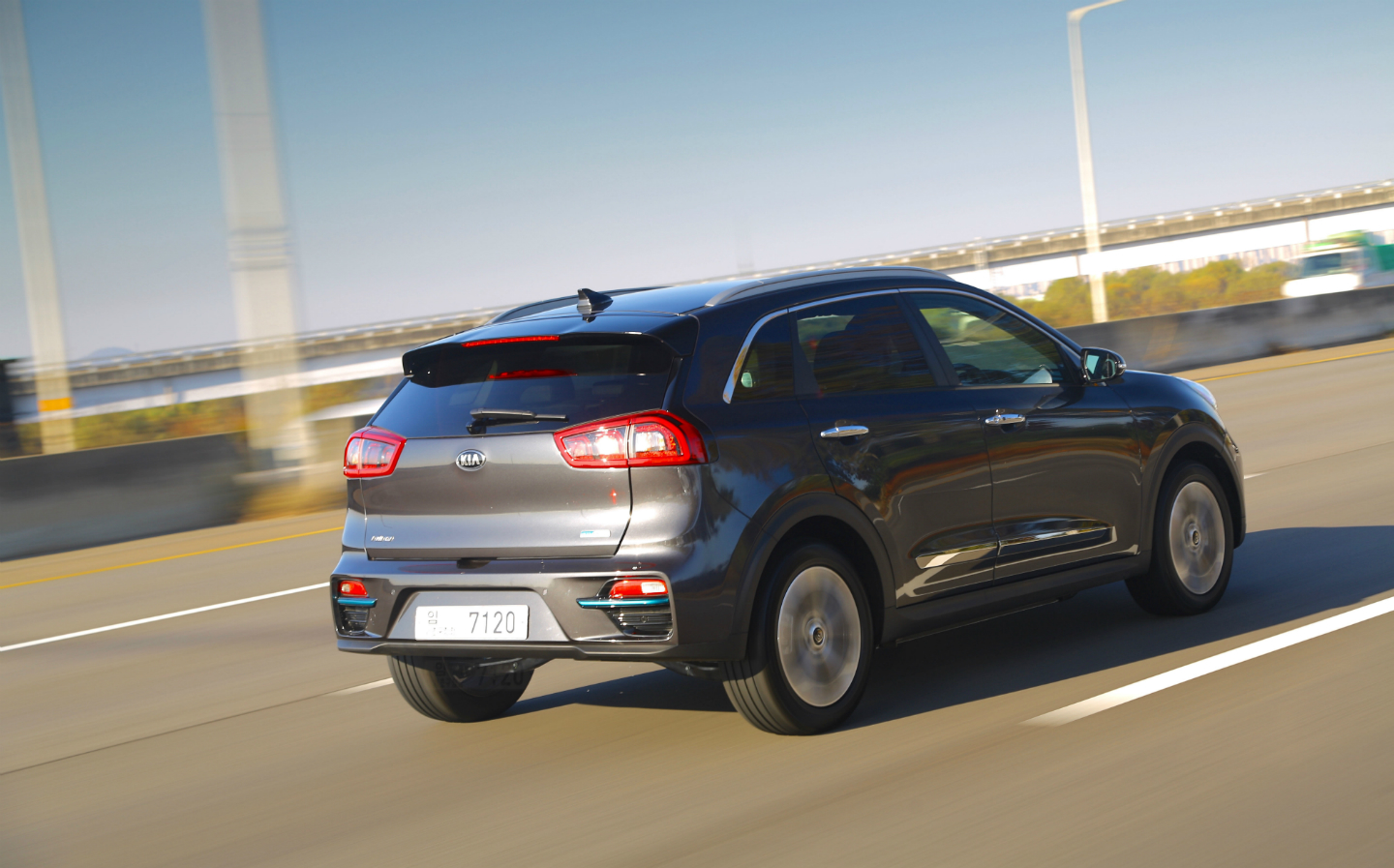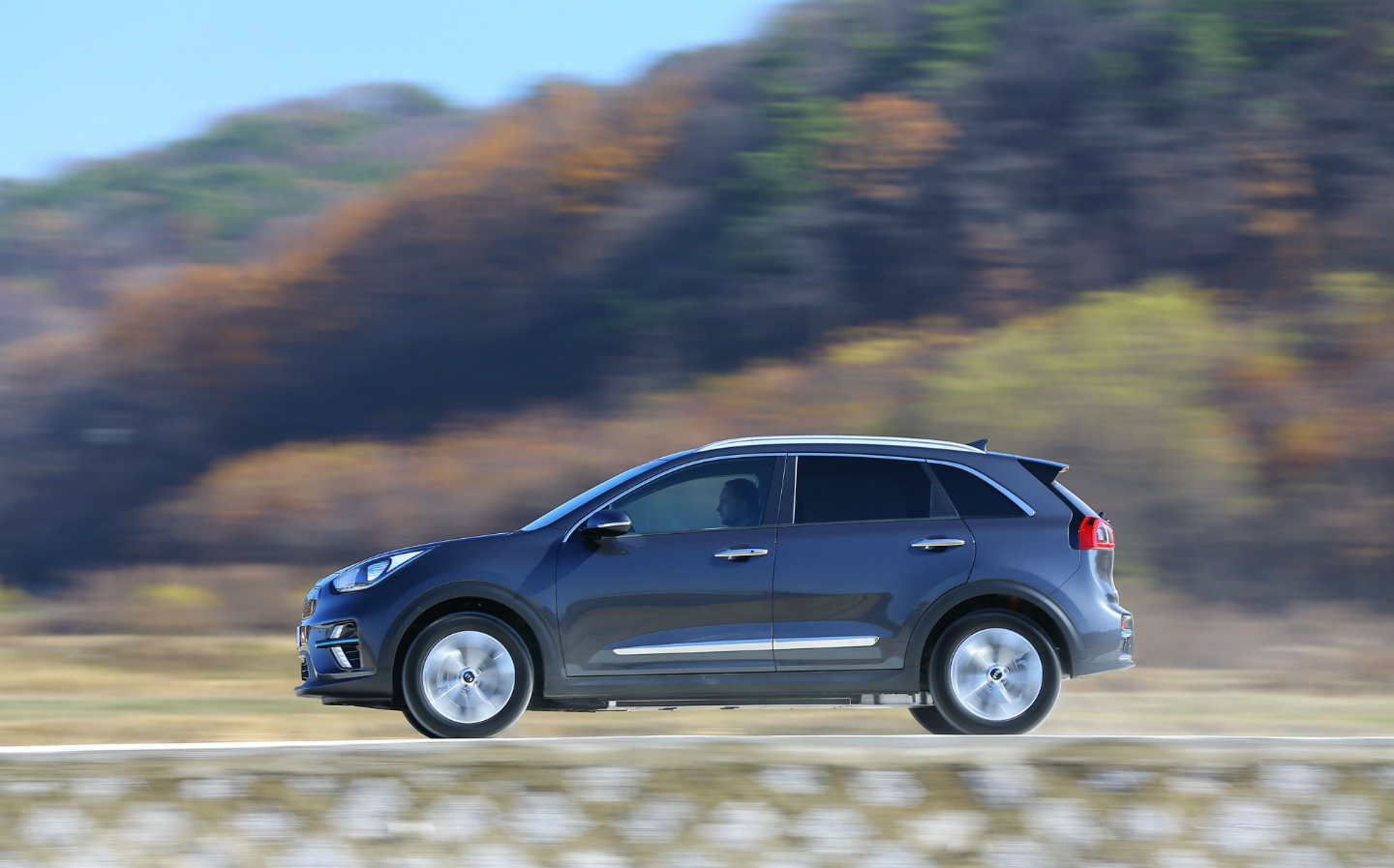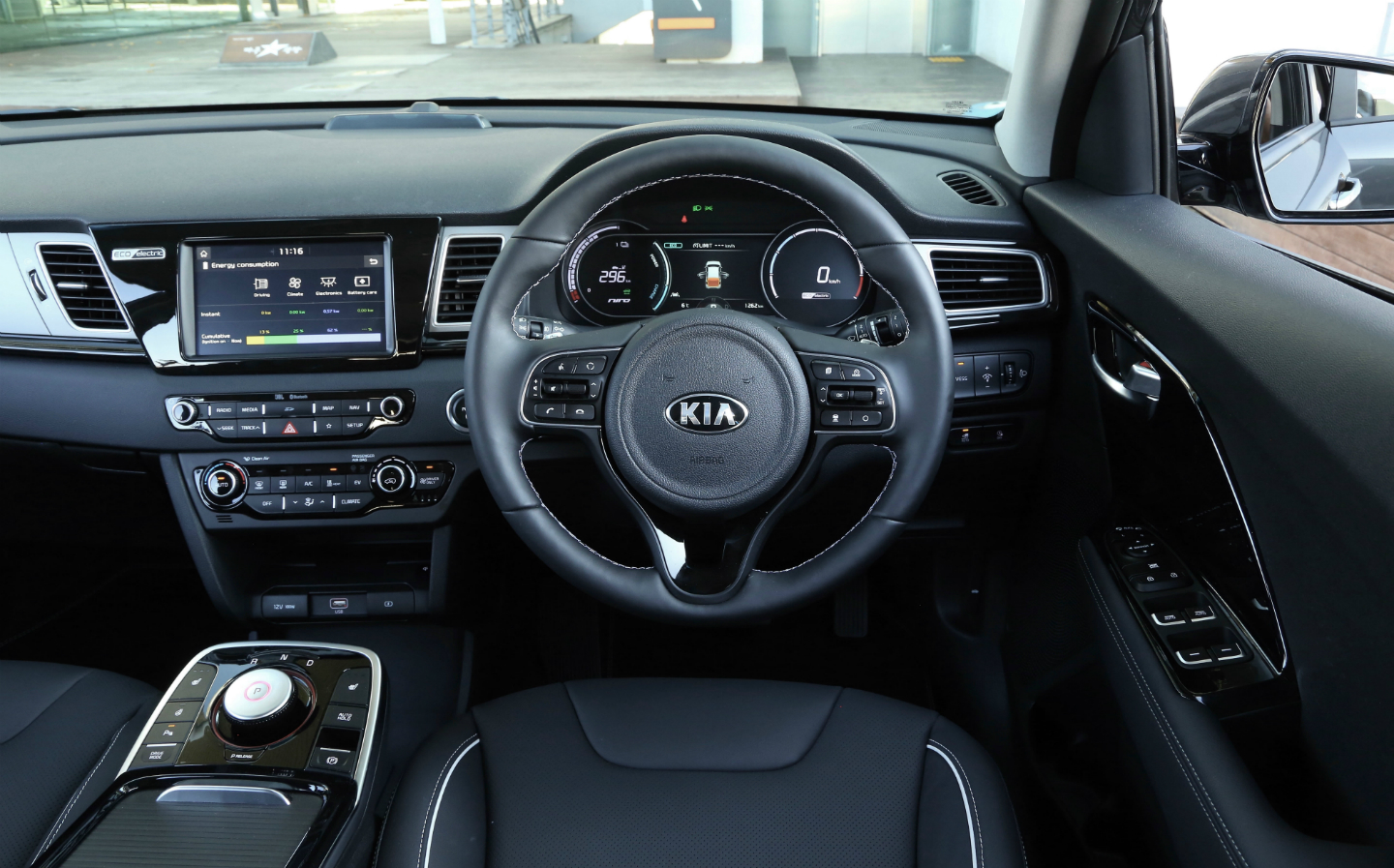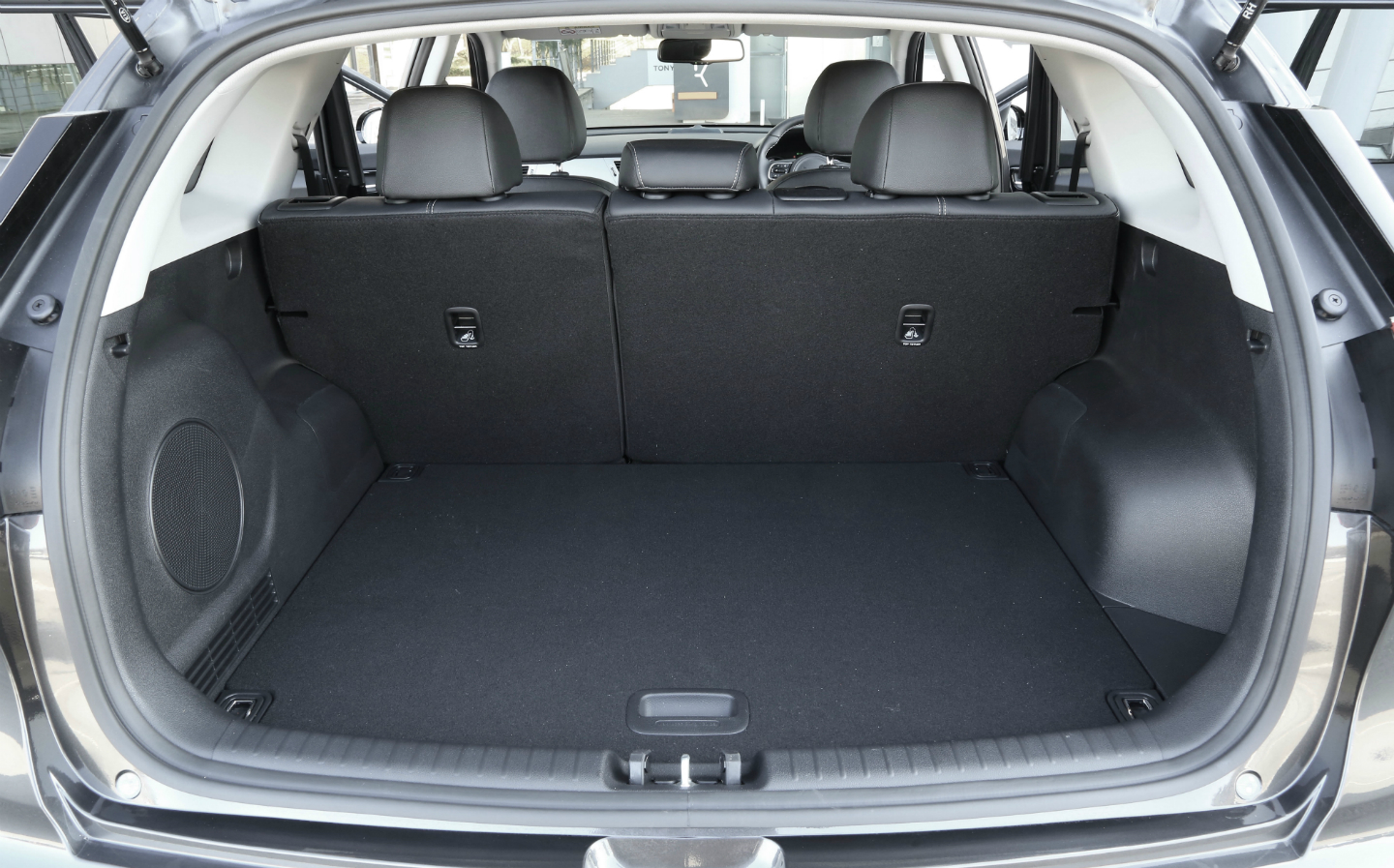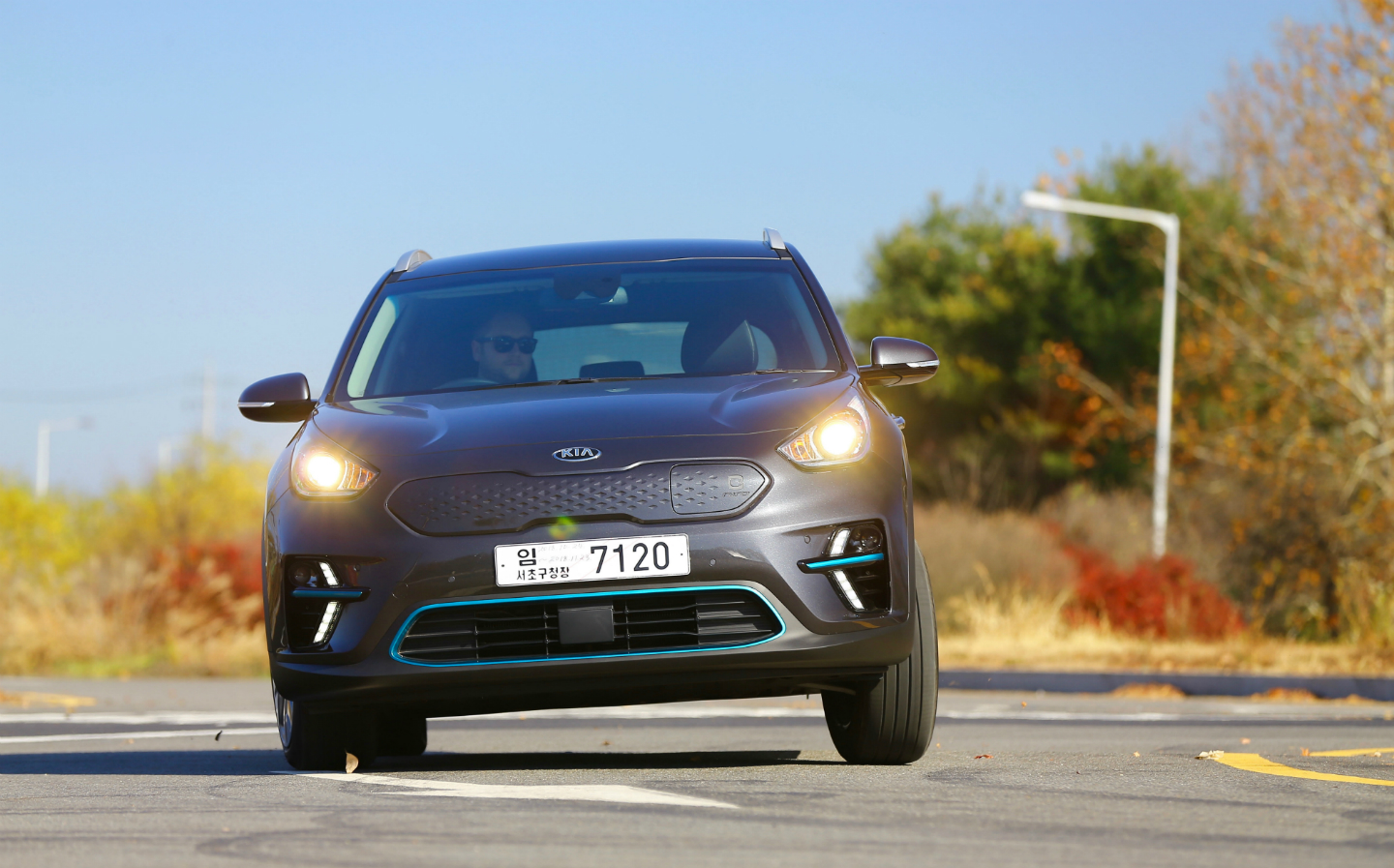2019 Kia e-Niro review
Long-range, affordable electric SUV
WHAT HAVE we here? A £30,000-ish pure-electric SUV that has a range of nearly 300 miles and comes with Kia’s famous seven-year warranty, providing peace of mind about the technology? If you’ve been considering electric car ownership but have been put off by worries over battery range or Tesla’s sky-high prices, the Kia e-Niro is shaping up to be the car that finally wins you round.
True, it’s not the most stylish of SUVs out there — you can pick up an uber-cool XC40 for the the same money — but it’s also far from ugly. The e-Niro marks itself out from the standard Niro hybrid thanks to a solid front grille, which houses the charging port, and flashes of blue trim near the daytime running lights and round the air intakes. The e-Niro also has differently styled alloy wheels which, like the grille, aid aerodynamics and efficiency.
Similarly, the interior is comfortable and practical rather than exciting and stylish. The tone is set by the slick 8in touchscreen that comes with sat-nav, a JBL stereo, reversing camera, and compatibility with Apple Carplay and Android Auto. It’s easy enough to use, and there’s the back-up of the row of buttons below the screen to help navigate the system while you’re driving.
Elsewhere, there’s a lot of black in the cabin but the blue flashes around the air vents and mood lighting system for the centre console help lift the ambience. And all those black bits are quite nice anyway, with leather, soft-touch plastics and piano black trim.
Front passengers will be comfortable enough; the driver’s seat comes with 8-way power adjustment and lumbar support. But adults in the back don’t fare so well; head and shoulder room is OK, but a small hump in the floor and not much space for your feet make you feel a little cramped.
The boot is a decent size, though: the car’s batteries are underneath rather than between the rear wheels, so the e-Niro’s boot is about the same size as that of the Nissan Qashqai.
The Kia e-Niro is a bit more practical than a Nissan Leaf, but it’s also more expensive
And the e-Niro is a lot of fun to drive. With instant acceleration, you’ll zip sharply off from the lights and out of junctions. It is comfortable and, of course, there’s no noise beyond what comes from the tyres and airflow, thanks to that electric drivetrain.
The car has three drive modes that you can alternate between via a dial on the centre console – eco, normal and sport. Keep the car in eco mode and you can expect the range to increase. Switch to sport and the e-Niro feels much sportier to drive, but the range will drop.
Of course, charging takes a long time. If your e-Niro is completely out of battery it can take nearly 10 hours to completely recharge at home. But then again, if you’re at home and it’s sitting on your driveway doing nothing, it might as well be topping up.
The Kia will also take a much faster 100kW rapid charge, enabling the battery to get back up to 80% full in 54 minutes. Unfortunately, at the time of writing you’ll struggle to find a 100kW charger in the UK. More likely you’ll be able to plug in to a 50kW public charger, which will should be able to get you from zero to 80% in 75 minutes.
Rapid charging isn’t terribly kind to the batteries but, as mentioned earlier, at the time of writing Kia says the battery is covered by the same standard seven-year/100,000 mile warranty applies as the rest of the car. We wouldn’t leave it without charge for a long time, though, as that tends to kill the battery (it’s called bricking); we’ll wager mistreating it like that will appear as a caveat in the warranty terms and conditions when the e-Niro goes on sale.
Kia has been generous with standard equipment but, although it’s good value compared to a Tesla or Jaguar I-Pace, at a whisker below £33,000 it’s more affordable than the forthcoming Tesla Model 3 and similar in price its the Hyundai Kona Electric sister car but pricier than the Nissan Leaf, albeit with a lot more range than a standard Leaf. And for ithis kind of money, many buyers may prefer a fairly posh petrol or diesel SUV. Then again, there are potentially some serious fuel savings to be had.
Having weighed up the pros and cons, you may be sorely tempted. The problem is that you’ll have to wait until April 1 next year before deliveries begin. On the plus side, that does give you plenty more time to think things over.
Find out how much you could save on the Kia e-Niro at carwow (not on sale at time of publishing)
Kia e-Niro rivals
Hyundai Kona Electric
£29,495 — £36,295
See how much you could save at carwow
Nissan Leaf
£29,690 — £32,890
See how much you could save at carwow
Jaguar I-Pace
£64,495 — £81,495
See how much you could save at carwow


